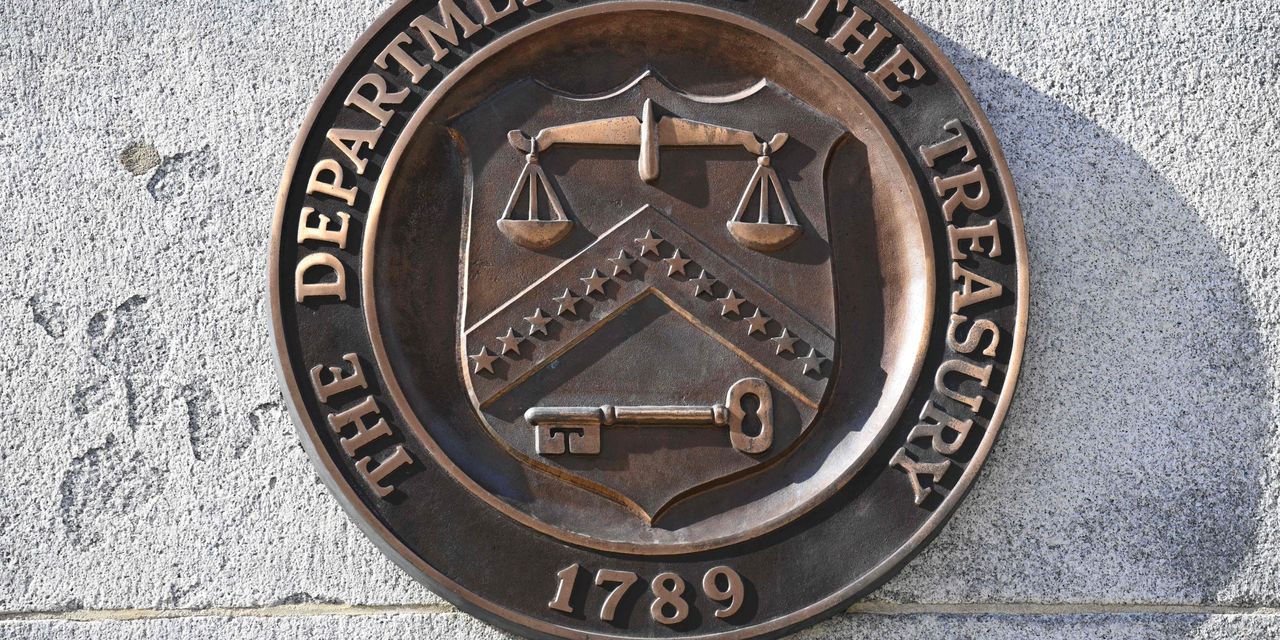A fund that mirrors the performance of the $55 trillion U.S. bond market cemented its lowest close since 2008 on Monday.
A sharp selloff in Treasurys has been triggering ripple effects in the broader U.S. bond market, with shares of the iShares Core U.S. Aggregate Bond ETF
AGG
posting its lowest close since October 2008, according to Dow Jones Market Data.
Shares of the fund finished at $93.13 on Monday, down from a record high of $119.63 on Aug. 4, 2022, a drop of about 22%, according to Dow Jones Market Data. The ETF has been under pressure lately, and needed only to close below the $93.63 threshold to book its lowest finish since October 2008.
The ETF matters because it tracks the closely followed U.S. Bloomberg Aggregate Bond Index, the main gauge of performance for investment-grade bonds. It also is the index all fixed-income investors strive to beat each year.
“I would say it’s edgy,” said Mike Sanders, head of fixed income at Madison Investments, of the tone of the bond market. “The bond market finally realized the Fed is serious about keeping rates higher.”
See: ‘We are in a bit of a vacuum that is scaring people,’ says Morgan Stanley portfolio manager of Treasury market selloff
“I think it’s a generalized fear that despite everything the Fed has done, the economy still has positive momentum,” said Jack McIntyre, a portfolio manager of global fixed income at Brandywine Global Investment Management.
The Fed in September held its policy rate steady at a 5.25%-5.5% range, the highest in 22 years, but signaled those rates could be needed for some time to get inflation down to its 2% yearly target.
Sharp moves higher in bond yields make older securities in a portfolio with lower coupons less attractive. Since bond yields move in the opposite direction as price, lower prices point to selling pressure in markets.
Pain now, gains later?
The Bloomberg “AGG” is composed of longer bonds, giving the index a duration of six years. Its total return was -1.2% on the year through Monday, according to FactSet, but on pace for about a -15% three-year return.
The recent selloff has been more acute for funds invested in longer-duration bonds, with the popular iShares 20+ Year Treasury Bond ETF
TLT
down 12.7% on the year through Monday.
See: Bond investors feel the heat as popular fixed-income ETF slumps toward lowest close since 2007
McIntyre said the sharp rise in 30-year fixed mortgage rates isn’t helping either, since that slows down payment speeds in the agency mortgage bond market. That could be triggering some selling in Treasury securities as investors look to hedge against that risk, he said.
The 30-year fixed mortgage rate was pegged at 7.61% on Monday, according to Mortgage News Daily. Most homeowners, however, refinanced when rates were ultralow, which has put housing activity in a deep freeze.
McIntyre also thinks there’s simply too much fear in markets about the odds of higher rates for longer, since he’s waiting for the U.S. economy to show signs of slowing into year-end, which could eventually spur lower rates.
“Waiting right now is actually a good thing,” McIntyre said, adding that it’s been a big shift from the last decade of “TINA,” or no alternative to buying bonds with skimpy, or negative yields. “Now, time is on your side. I can wait.”
Sanders at Madison Investments also pointed to bond funds focused on shorter- and medium-dated Treasurys as still offering positive total returns in 2023.
Front-end Treasury bills
BX:TMUBMUSD03M
have remained relatively steady around the 5.5% yield range, while selling has hit longer 10-year Treasury
BX:TMUBMUSD10Y
securities since the central bank indicated its policy rate might be cut only two times next year, instead of the four times expected previously.
“I wouldn’t be bailing on fixed-income now,” Sanders said. “You’ve taken pain, if you will. But think about where we are starting at. It doesn’t take much of a move down in interest rates to recoup all of that performance, plus clip a coupon.”
Related: How 10-year Treasurys could produce 20% returns, according to UBS
U.S. stocks booked sharp losses in September. The Dow Jones Industrial Average
DJIA
fell 0.2% on Monday, the S&P 500 index
SPX
ended virtually unchanged and the Nasdaq Composite Index
COMP
gained 0.7%, according to FactSet.
Read the full article here











Leave a Reply